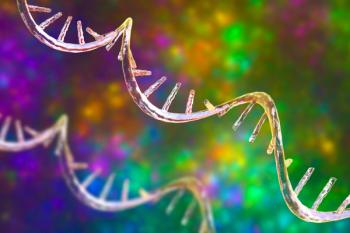
Louisiana Biotech Firm Explores the Potential of Adult Stem Cells
Nupotential, a small Louisiana biotechnology firm, believes it may have an answer to the ethical concerns and technological challenges involved in turning stem cells into medical therapies.
Nupotential, a small Louisiana biotechnology firm, believes it may have an answer to the ethical concerns and technological challenges involved in turning stem cells into medical therapies.
Stem cell technology is a promising yet contentious area of medical research. It offers an avenue to therapies for diabetes, Parkinson’s, and Alzheimer’s diseases, as well as a host of other devastating conditions, but ethical concerns over the use of embryonic stem cells have stirred debate and slowed progress. As a result, various states have passed legislation restricting or prohibiting the use of embryonic stem cells in research protocols. For example, Louisiana statute RS 40:1299.36 states, "the use of state, private, or federal funds can only be used on stem cells extracted from embryos before August 9, 2001."
No such restrictions exist regarding adult stem cells, although some research scientists argue that only embryonic stem cells provide the plasticity necessary for therapeutic applications. Although adult stem cells offer the advantage of immunological compatibility with their host, in the final analysis it may prove necessary to understand the gene activation programs of the embryo to realize the full potential of adult stem cell therapy.
Nupotential, based in Baton Rouge, is one of several firms (see table) following new pathways to the development of therapeutic applications of adult stem cells.
NuPotential is evaluating a class of proprietary compounds that induce reprogramming of a patient’s own cells to be used as progenitors for new therapeutics options. Ordinarily, viruses are used to transport dedifferentiation signals into cells, but that is a hit-or-miss proposition. The NuPotential technology is an in vitro system that reprograms large numbers of cells simultaneously by modifying metabolic pathways and related components that regulate the establishment and maintenance of the epigenome. The chemical manipulations cause the de-repression of transcriptionally inactive pluripotent genes required for re-differentiation of somatic cells into multiple lineages, or embryonic development, after somatic cell nuclear transfer. The primary epigenetic signals that are required to be reprogrammed include patterns of DNA methylation, histone modification, and chromatin structure.
According to Kenneth Ellertsen, PhD, Nupotential’s vice president, says this is a key to controlling the way stem cells grow. “By modifying the epigenome of donor cells in culture using small molecules and other treatments, we will improve reprogramming competence of the nucleus,” he says.
If this technology proves successful in reliably circumventing embryonic stem technology, with its minefield of legal, ethical scientific challenges, it would open a realm of possibilities. These cell lineages could be used for various cell therapies, to improve agricultural cloning, and advance stem cell research tools. The company has yet to release specifics on its adult stem cell activation program, but Ellertsen said that data on NuPotential’s investigations will appear shortly in the peer-reviewed literature.
In the meantime, small-molecule activation of pluripotent stem (iPS) cells is well described in the peer-reviewed literature. For instance, Hangfu et al. describe reprogramming of somatic cells to a state that closely resembles embryonic stem cells.1 They report that valproic acid, a histone deacetylase inhibitor, enables reprogramming of primary human fibroblasts without the need for the oncogenes. The induced human iPS cells resemble human embryonic stem cells in pluripotency, gene expression profiles, and epigenetic states. Another paper from the same laboratory, by Borowiak et al., discusses two cell-permeable small molecules that direct differentiation of embryonic stem cells into the endodermal lineage.2 Endodermal cell derivatives, including lung, liver, and pancreas, are of interest for regenerative medicine, but efforts to produce these cells have been met with only modest success.
The Promise and Hype Surrounding Stem Cells
Stem cell therapy (both embryonic and adult) has been the subject of tremendous hype and political posturing ever since it was first proposed. There are many private foundations and state initiatives that enthusiastically support disease-focused investigations of the possible applications of this technology. This has caused concern in some circles that the public has been oversold and will expect instant cures for a raft of illnesses, and that anger and resentment will emerge when such cures fail to appear. On the other hand, some websites representing the pro-life movement have erroneously reported that adult stem cells can replace embryonic stem cells, and therefore investigations of the latter should be abandoned.
The NIH stem cell website states that to realize its promise, the stem cell therapy must overcome a number of daunting hurdles. These include expression of the necessary characteristics for engraftment, extensive proliferative capacity, ability to differentiate into the desired cell type, survival, integration, and functional performance for the entire life of the recipient. It is especially disheartening for those hoping for early cures for stem cell disease targets that extremely long-term studies will be required in order to certify the safety of either adult or embryonic stem cell therapies. Although all of these goals are achievable in theory, their attainment will require years, not months, and the public debate must include a recognition of this basic reality.
References
1. Huangfu D, Osafune K, Maehr R, Guo W, Eijkelenboom A, Chen S, Muhlestein W, Melton DA..Induction of pluripotent stem cells from primary human fibroblasts with only Oct4 and Sox2. Nature Biotechnol. 2008; 26:1269 –75.
2. Borowiak M, Maehr R, Chen S, Chen AE, Tang W, Fox JL, Schreiber SL, Melton DA. Small molecules efficiently direct endodermal differentiation of mouse and human embryonic stem cells. Cell Stem Cell. 2009 Apr 3;4(4):348-58.
–K. John Morrow, Jr., PhD
Newsletter
Stay at the forefront of biopharmaceutical innovation—subscribe to BioPharm International for expert insights on drug development, manufacturing, compliance, and more.




